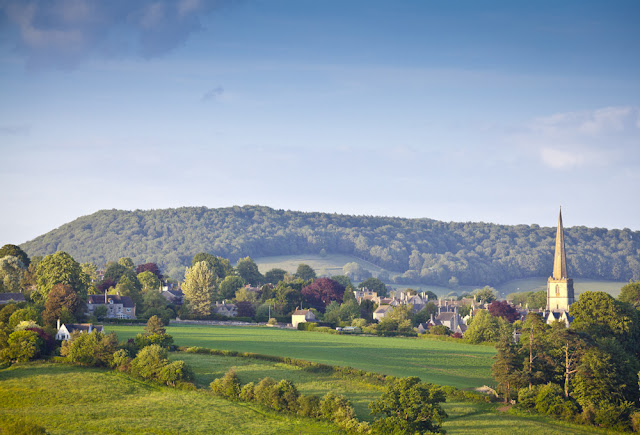A Fairy Tale Village Come to Life
Gossip Column #3
Setting foot in the Cotswolds is like stepping into the setting of a fairy tale. Cotswolds' visitors are treated to 800 square miles of chuckling brooks, rolling hills, ancient woodlands, and meadows filled with wildflowers.
The Cotswolds stretch from just south of Stratford-Upon-Avon (birthplace of William Shakespeare), to just south of Bath (famous for its Roman baths and for having once housed writer Jane Austen). The are is such a natural wonder that it was declared an Area of Outstanding National Beauty in 1966, and brought under permanent government protection.
Evidence suggests that people have lived in the Cotswolds since the Bronze Age, which began in England around 3000 BCE. The Romans arrived around AD47 and immediately set to work building roads and towns that still stand today. They were among the first to quarry the golden stone that help the Cotswolds' buildings their fairy tale appearance. The Cotswolds
Setting foot in the Cotswolds is like stepping into the setting of a fairy tale. Cotswolds' visitors are treated to 800 square miles of chuckling brooks, rolling hills, ancient woodlands, and meadows filled with wildflowers.
The Cotswolds stretch from just south of Stratford-Upon-Avon (birthplace of William Shakespeare), to just south of Bath (famous for its Roman baths and for having once housed writer Jane Austen). The are is such a natural wonder that it was declared an Area of Outstanding National Beauty in 1966, and brought under permanent government protection.
 |
| The Cotswolds have over 3,000 miles of accessible paths, so the best way to experience this part of England is definitely on foot! |
 |
| Surely this Cotswold stone cottage houses Hansel and Gretel, or at least an elf or two! |
The Cotswolds really rose to fame during the Middle Ages, when sheep farmers discovered that the rolling hills of the area made prime grazing land. In practically no time, Cotswold wool was considered the finest in the country and was in extremely high demand. At one point, Cotswold sheep provided half the wool consumed by the country.
Cotswolds wool merchants grew immensely wealthy. They built huge, storybook mansions and elaborate churches (still known today as "wool churches").
FUN FACT: England once placed such stock in wool that, in 1667, Parliament passed a law demanding that all dead bodies either be wrapped in wool before being buried, or placed in a coffin lined only with wool. Those who died from the plague were the only ones excluded from this law. Even so, anyone wishing to bury plague victims had to get an affidavit confirming the cause of death to be plague before he could bury the wool-less bodies.
In later centuries, a few mills sprang up to accommodate England’s growing textile trade, but other than that this area of England remained largely untouched by progress and the Industrial Revolution. By the time Emma was born, the Cotswolds easily took first prize for “English village that most closely resembles a fairy tale or storybook village.”
Speaking of Emma, she adores her husband and wants very much for him to be happy She just isn’t willing to leave her fairy tale village behind. And really, who can blame her?




Comments
Post a Comment